Рено за Русия
Кевин Магнусен:
What are your thoughts on the Sochi Autodrom?
It’s pretty unique with some interesting corners so it’s a bit different from the other tracks we visit. The grip level’s pretty good from the track surface too. In terms of layout, turn three seems to go on forever but you’re flat on the throttle. Then there are a lot of corners where it feels you’re braking too late but where the exit opens up and there you have to focus on getting the exit right. You have to be a little bit different in how you approach your driving there.
Looking back on China, was it a crisis when your suspension let go?
Honestly, it was no drama from behind the wheel; the suspension collapsed and then we had the puncture. It was all pretty easy to deal with. Of course, it took a long time to repair the car so missing the sessions was the frustrating aspect. Looking out of the window on Saturday morning was frustrating when I saw the rain as we knew the race could well be dry and the first time I drove the final corner in dry conditions in fact was in qualifying!
What did you miss from sitting out most of FP1 and then FP2 too?
Generally every lap you’re behind the wheel you’re improving yourself and also improving what you know about the car, the circuit and the tyres so you get more and more consistent with every lap. Missing one session is not so bad, but essentially missing two, then having a third session which was wet when the rest of the weekend was dry? That was less than ideal.
How was your race?
For us the race was pretty steady and not too eventful. You don’t mind when you have a race like that when you’re near the front, but that wasn’t the case so it won’t go down as one of my more memorable events! It was a race where everyone finished, so we couldn’t capitalise on better reliability than the opposition. We’re certainly hoping for better things in Russia.
You qualified in sixth and finished fifth in your first Russian Grand Prix in 2014; any particular memories?
I remember that we had a gearbox penalty so we had to work quite hard for that fifth position. It’s always interesting to see a new Grand Prix venue and learn a new track.
Would you be better than Jolyon if you tried Cossack dancing?
I’ve seen Jolyon trying Salsa dancing on a beach so I reckon he’d be better than me.
Any other Russian experiences you’d like to share?
I’ve been there twice with Renault 3.5 and at the Moscow Raceway in 2012 and 2013. I scored a win and a second place both times so Russia hasn’t treated me too badly. I can’t say I know too much about Russian food but I have been told about a Russian drink...
Джулиън Палмър: What are your thoughts on Sochi?
For me the best thing about Russia is that I won the first ever GP2 Series race there and that race won me the championship so I have very good memories of the Sochi Autodrom! It was a very good race, I got a great start so led from the first lap and won but was under a lot of pressure all the way. It’s great to win any race, but to win a race where you’ve had pressure at every turn, that’s a real achievement. Because I won that race I won the championship so that’s why I have some very good memories of Sochi.
How was the China debrief?
It wasn’t pretty and we’re analysing to make sure we can learn every lesson possible from the weekend. It was certainly a weekend where we struggled so we’re doing everything to understand why. We’ve made good progress and what we can achieve is certainly better than what we saw in Shanghai. From my perspective, I’m still learning what exactly I need from this car at different tracks, on different tyres and in different conditions. We’ve made some good progress dissecting and understanding and this should translate to improvement on track in due course.
What are your targets for Sochi?
My first aim is to get back to a Melbourne level of performance where I was happy with the car. As a team too, we were happy with the level of performance as we were through to Q2 in qualifying and near the points in the race with both cars quite evenly matched. I haven’t been able to replicate that in the last couple of races so that’s what we’ve been focusing on. We know that Russia won’t necessarily be the very best circuit for us, but I’m focused on my own performance to extract the very most I can from behind the wheel.
Aside of the Sochi Autodrom, what other knowledge do you have of Russia?
I am aware of some Russian drinks so hopefully we can achieve something in Sochi that warrants at least a small celebration.
Would you give Cossack dancing a try?
I don’t even know what it is so clearly I’d be no good, yet, so maybe I should learn…
How different is it racing an F1 car rather than a GP2 Series car?
F1 is much more complicated with the different tyre specifications, bigger degradation with the tyres, fuel consumption considerations and energy management – so there’s a lot to think about. GP2 is a lot more raw: you get in and drive the car whereas with Formula 1 there is a lot more to think about, whilst at the same time you have to drive at the limit against the best drivers in the world.
Боб Бел: What are the challenges of the Sochi Autodrom?
It’s an interesting circuit in terms of engineering challenges. It is essentially a street circuit however the layout doesn’t demand maximum downforce. There are a lot of 90° corners so straight-line braking and traction are called for, with less emphasis on mid-corner balance. It is a demanding circuit for brakes and tends to require a harder tyre compound as there’s a significant loading on the tyres through the long turn three-four combination so it’s likely to be a one-stop race.
Its stop-start nature means that fuel consumption is quite high and because of the nature of the track there’s more of a risk of the safety car coming out, so you have to remain poised with a variety of strategy permutations. It’s a track which in many senses is relatively straight-forward because of a preponderance of low-speed corners but it can easily throw some tactical issues because of tyre wear and higher risk of safety cars. It’s not the easiest circuit for overtaking and we also see issues with tyre warm-up. It’s probably not the most difficult circuit for us relative to our car’s current performance so a respectable job should be possible.
Last time out wasn’t the greatest display from the team; what went wrong?
Firstly we saw a rear suspension failure on Kevin’s car in the first session in Shanghai. We understood the problem and how to rectify it and were able to engineer and implement a solution whilst in Shanghai so we had no concerns with continuing to run the car. Of course, it shouldn’t have happened, but we understand what occurred and why so we’re confident we won’t see an issue of this type again.
What was the impact of this on the weekend?
The loss of track time for Kevin in FP1 after the failure and his subsequent non-running in FP2 did have ramifications, especially when we saw a wet FP3 the following day. This left us with a relative scarcity of data for dry set-up as normally you try different things across the two cars to be able to arrive at the best set-up.
Kevin wasn’t able to give his usual feedback and didn’t get to run with the soft tyre in the dry for any long runs so when you look at it we lost 50% of our information base for set-up and we felt the pain of this in our race where the balance and then the wear meant a significant lack of performance from where we could or should have been.
Shanghai is quite a particular track, is this why we didn’t look too flash in the race?
We had an issue, which was shared by some other teams too, where the track varied a lot between Friday and Sunday and the information we accumulated on Friday led us to a race set-up which wasn’t that required when we raced on Sunday. This is a contribution of the track evolution over the weekend and the different weather conditions. Essentially, we took the wrong direction on balance and suffered because of this.
Where are the improvements for the R.S.16 to come from?
We’ve seen a good step forward in performance from the power unit relative to last year and there’s more to come in that area. The next power unit upgrade will come as a step whereas on the chassis side it’s more of consistent evolution.
We don’t have any specific problems with our car so it’s a case of improving downforce and grip as these are the areas where we’re lacking relative to our rivals, and this is a result of our late start to development. Aero and mechanical grip is where we want to make progress.
Where does the development split lie between this year’s car and next year’s?
The regulations for next year represent a significant change so work on this year’s car is not as relevant as it would be if the regulations were relatively static. We still have a sensible development programme for the R.S.16, and we expect to see a decent raft of upgrades in the early to mid-season and these chassis upgrades are both aerodynamic and mechanical. Equally, the 2017 regulations represent a significant change. We have to catch-up to our rivals so next year does give us a good opportunity to do this.
Fred Vasseur: China: What went wrong?
It was a tough weekend for us from the beginning. The suspension issue on Kevin’s car meant we lost a lot of running time and this had a particularly detrimental effect this time. This meant that not only he missed out on running, but we didn’t accumulate the necessary comparison data between the tyres so making set-up choices for the rest of the weekend was a challenge. For Sochi we do expect an improvement from where we were in China, that’s for sure.
How’s the working relationship with both drivers?
We work well together and the relationships are strong. We still have yet to have a clean race with both cars over the course of the weekend: Kevin had a puncture in Australia, then there was the red light issue in Bahrain, where Jolyon wasn’t able to race at all. Then China was a pretty difficult race weekend all round. You need good, solid trouble-free weekends to be able to make clear and steady progress, and that’s what we’re working towards.
What were your thoughts on qualifying now it’s reverted to the familiar format?
I certainly recognised the system! I think it was exciting to the last moment in China so this was positive. In any qualifying format it’s never action at every turn, but I think the spectacle was good in Shanghai. Of course, the sport will always look to see where improvements can be made, and it’s good to see if sometimes we can learn from our mistakes too.
Away from the track, how are developments coming for the team?
There is a lot going on that will not be seen yet and equally there’s a lot of good initiatives we have already seen. China was a good example where we had a new member for the Renault Sport Academy with Sun Yue Yang joining us as well as increased support for Asian Formula Renault. We announced an exciting new partner with APL, and one which allows us to focus on the human performance of the team. We also were able to showcase the team’s new Bell and Ross watch which well matches our team image and goals. It’s clear there are many strong building blocks being put in place. Certainly with the Academy we have a lot of work to do, but it’s very exciting and potentially very rewarding in many ways.
Where is the team focussing for improvements?
We are looking at every single detail. At Viry every detail of the power unit is being looked at and at Enstone every aspect of the chassis is being looked at. It’s not a question of focusing on one area, it’s a question of looking across the board at every detail. We know we have a lot to do, we know our targets so that is what we are working towards.


















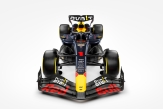
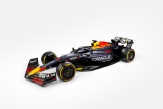

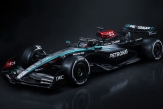
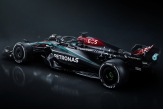


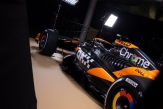

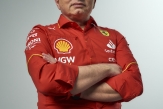
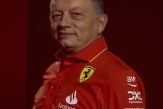
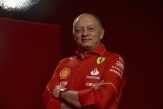

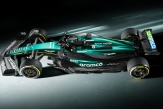

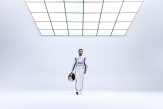


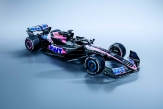
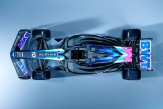

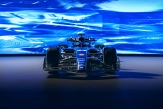

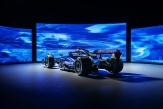
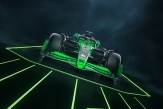
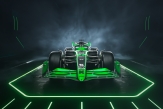
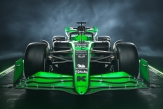

15/04/2024 от Огнян Тенчев (drJeckyll), няма коментари